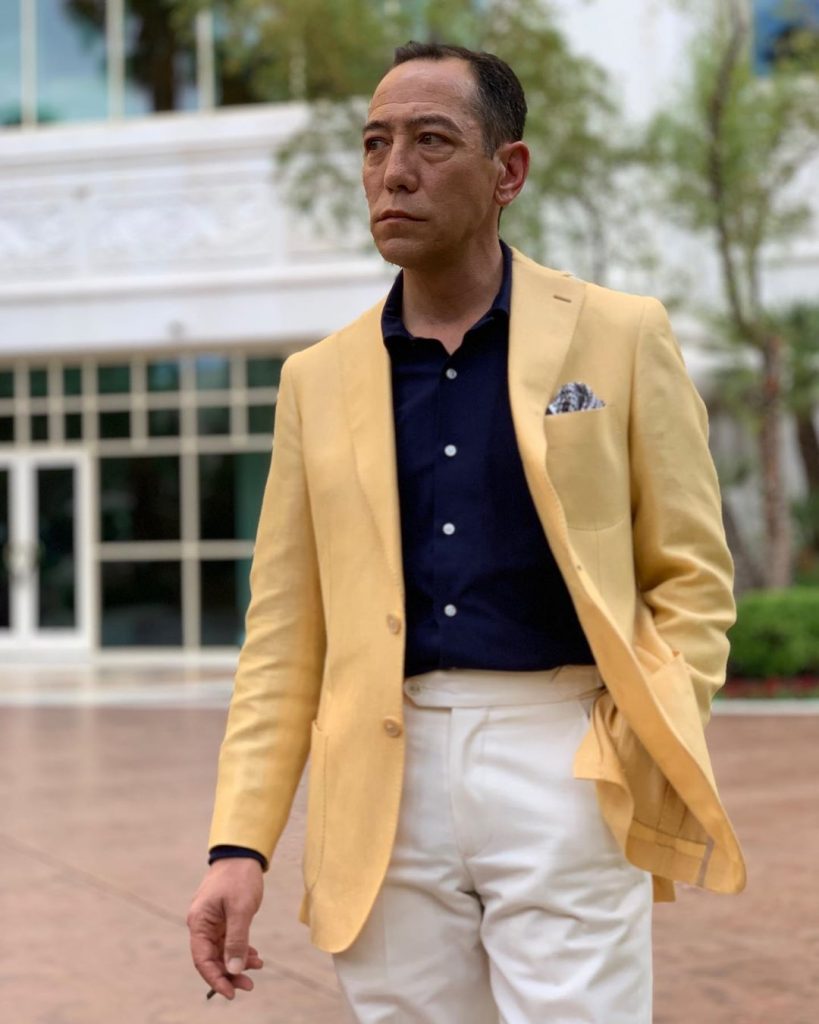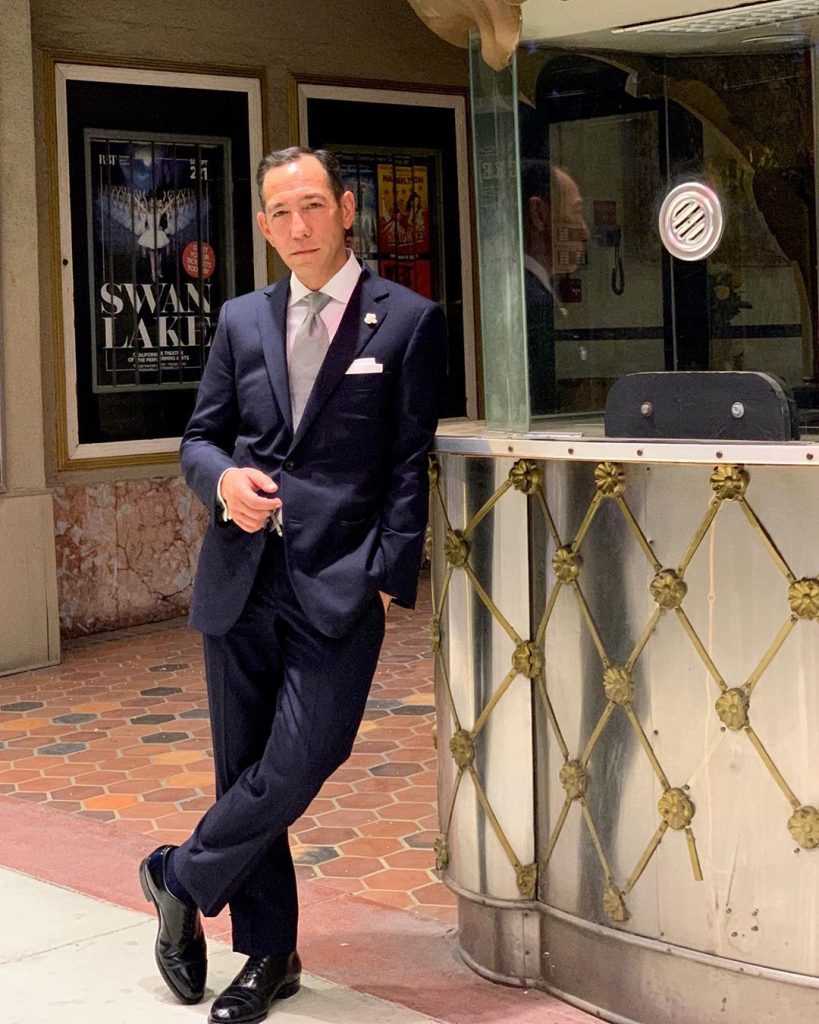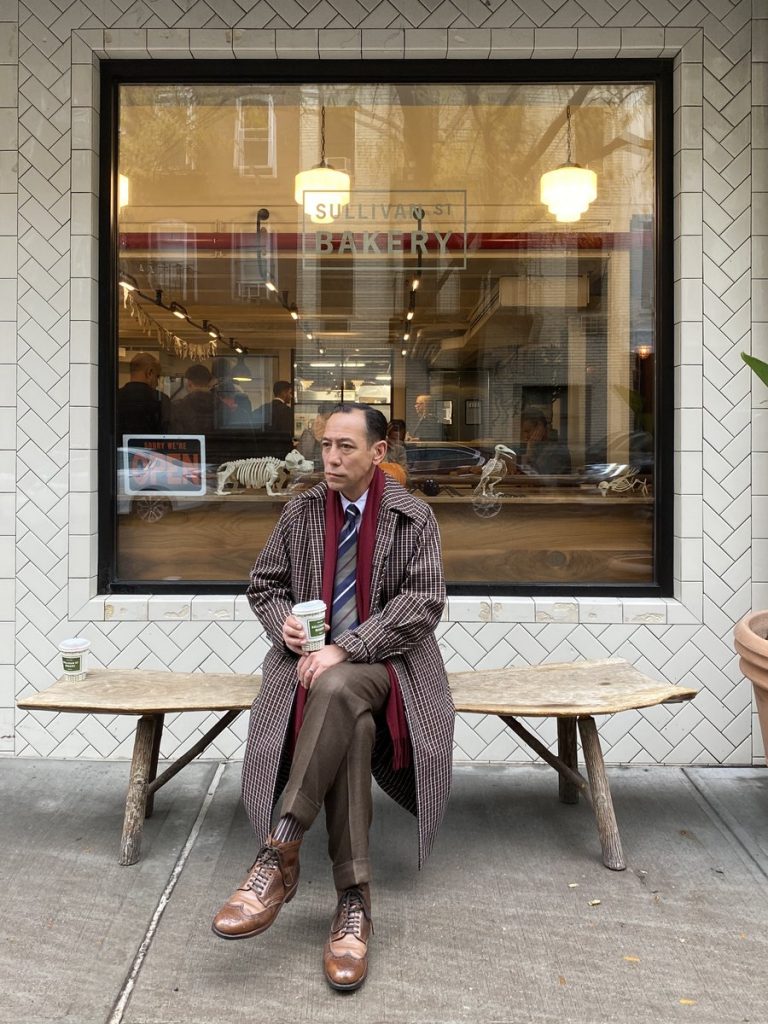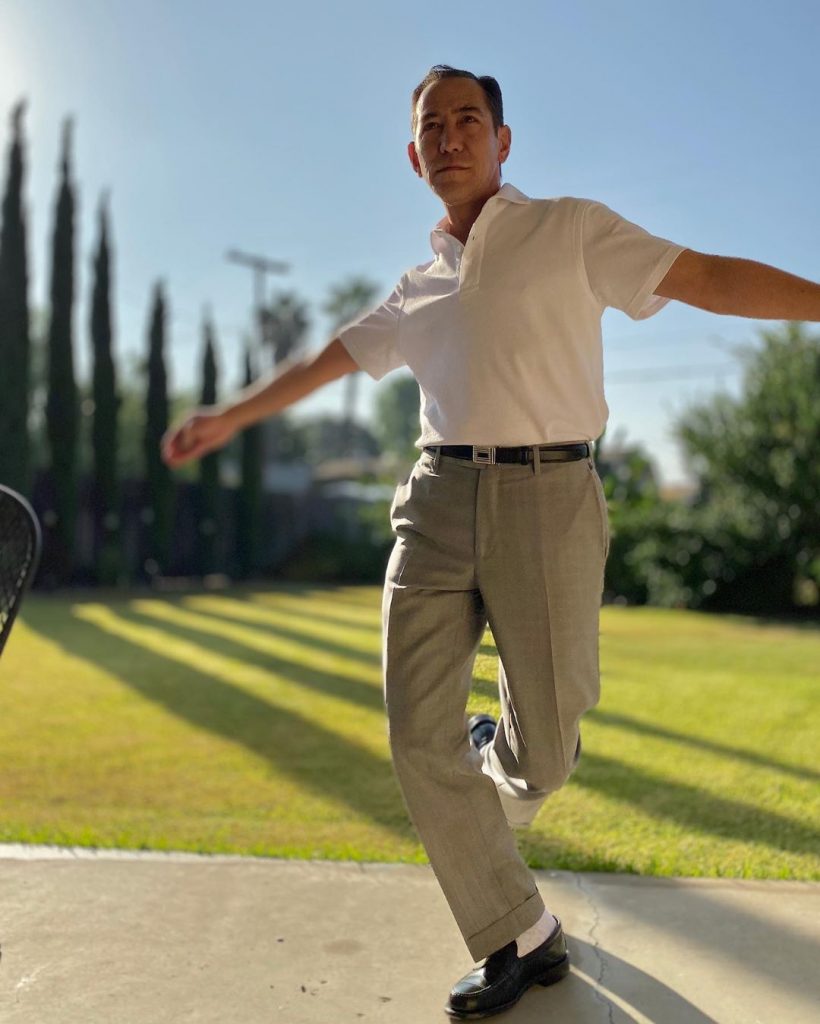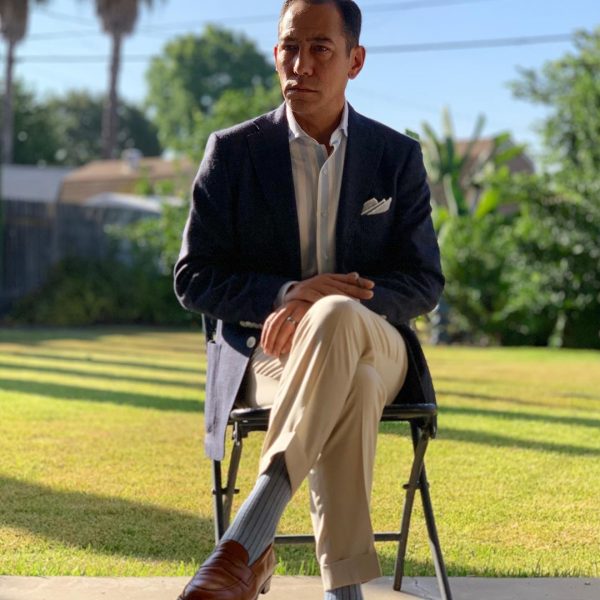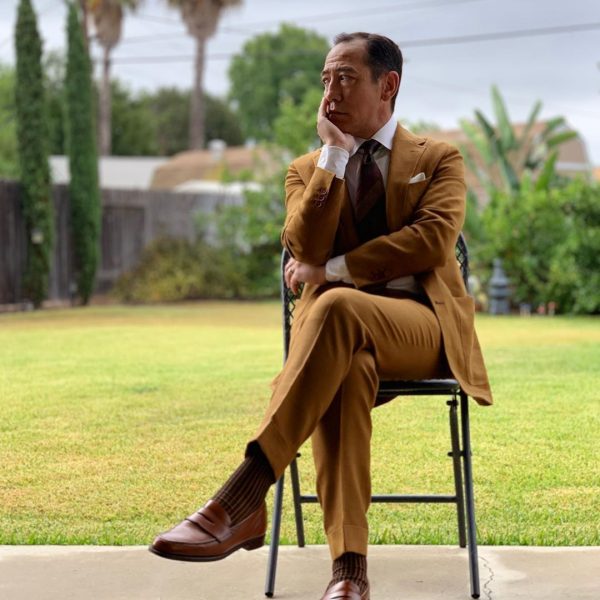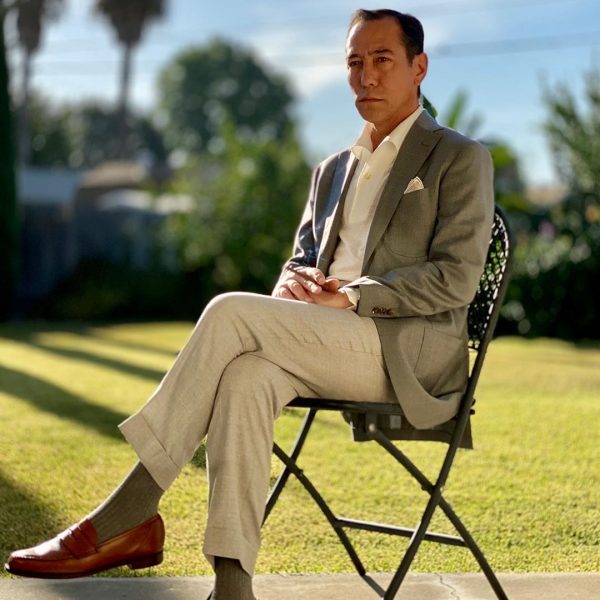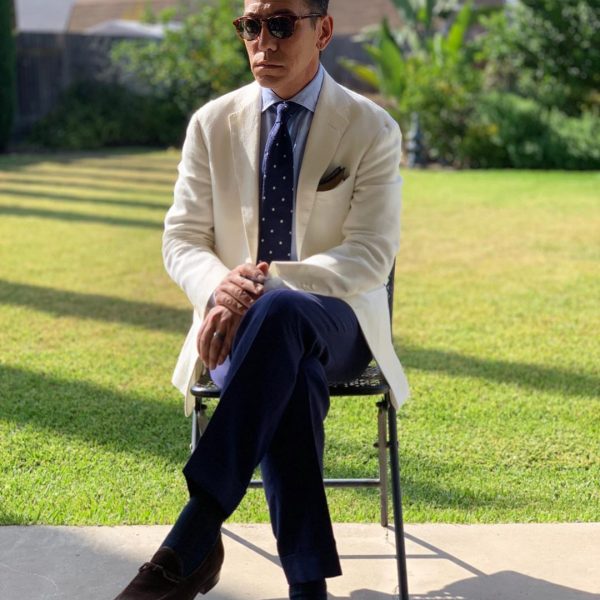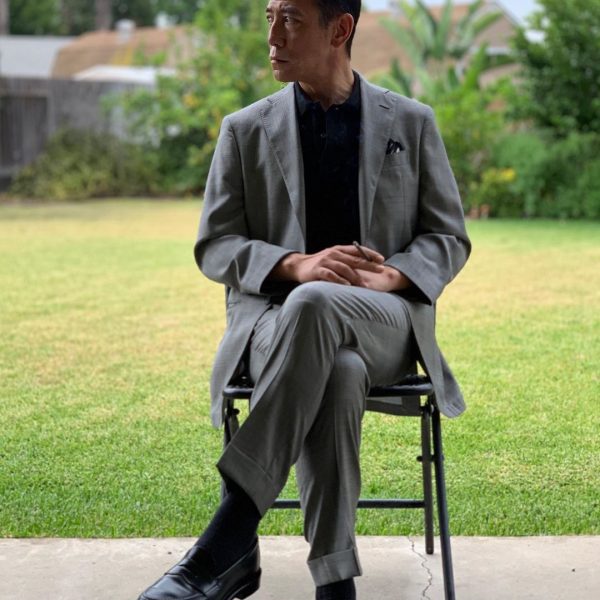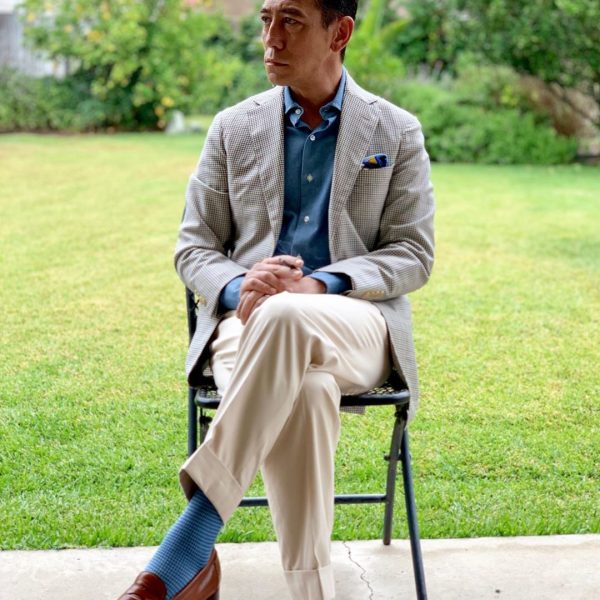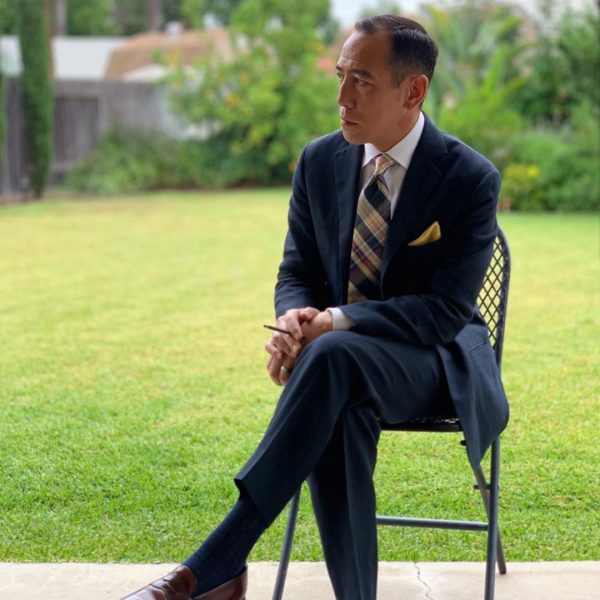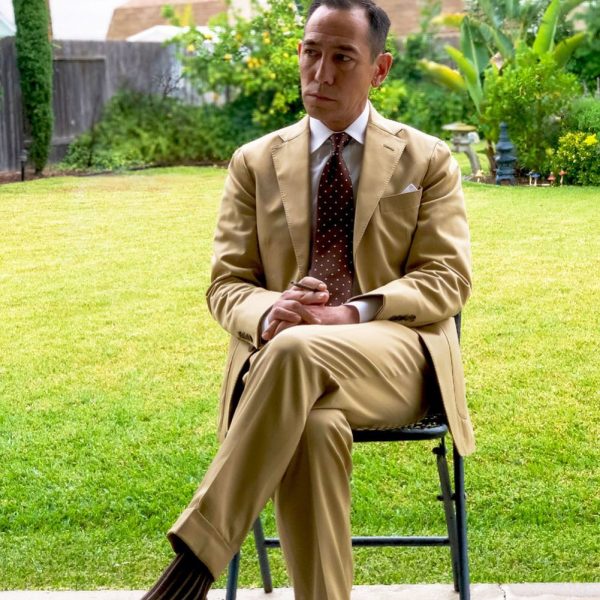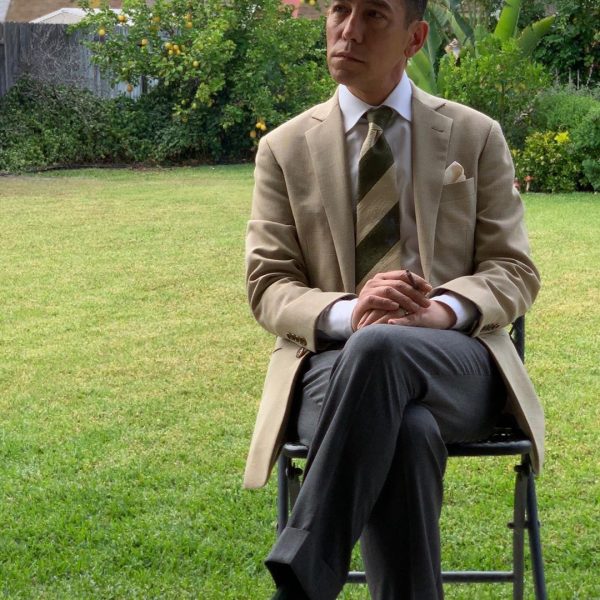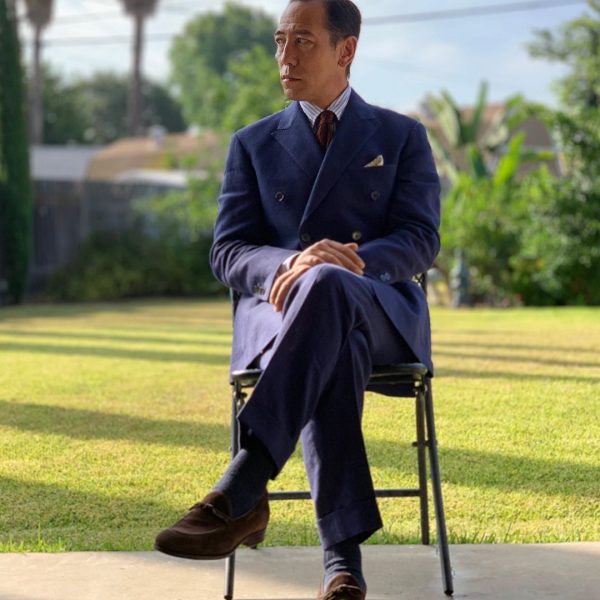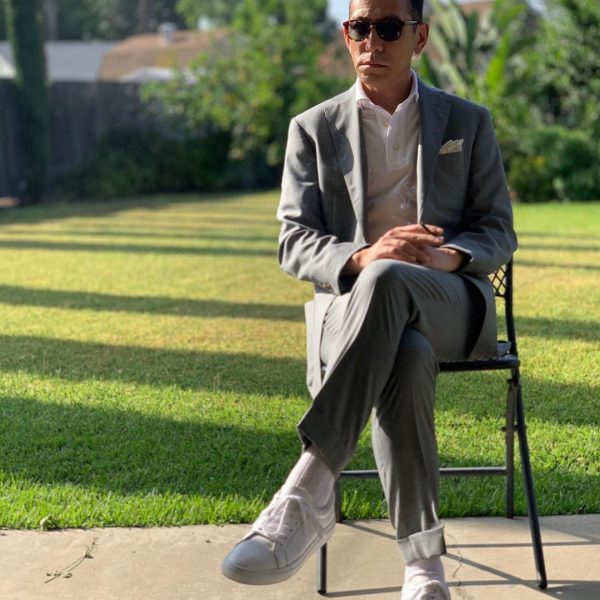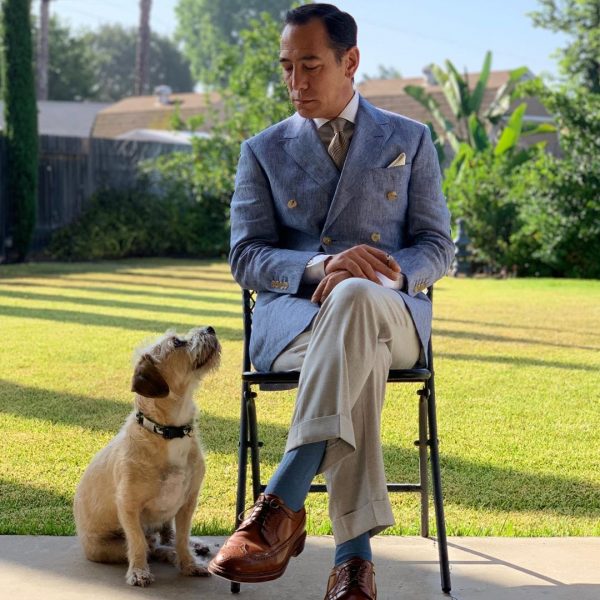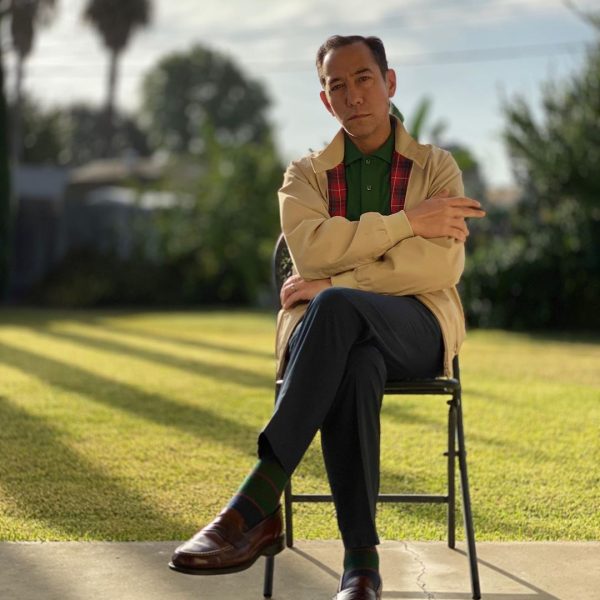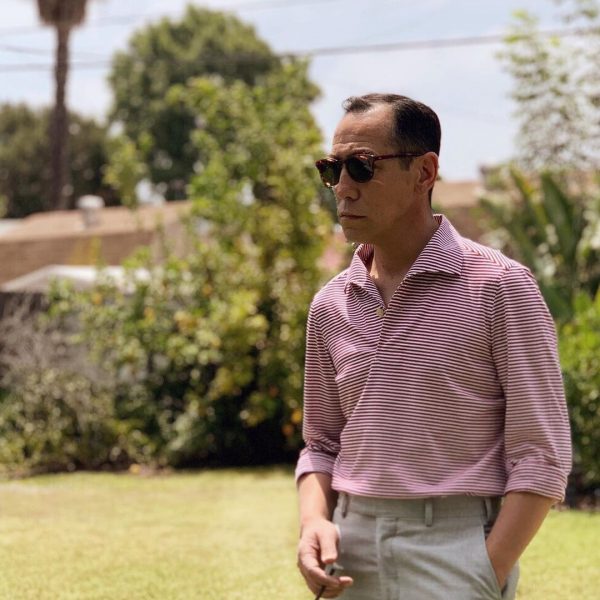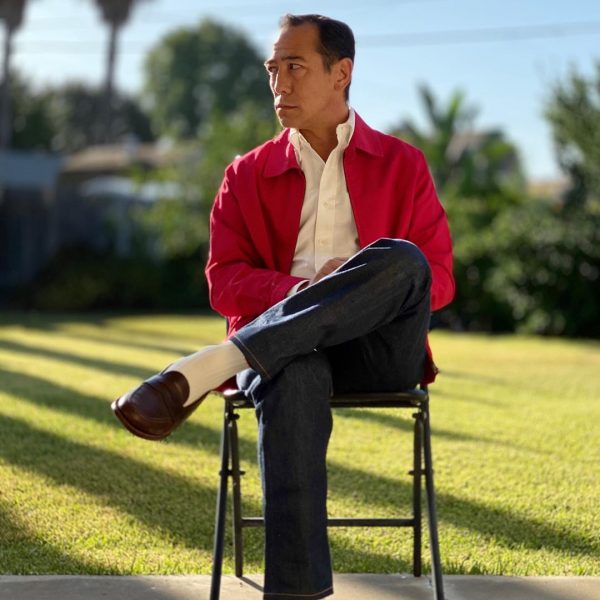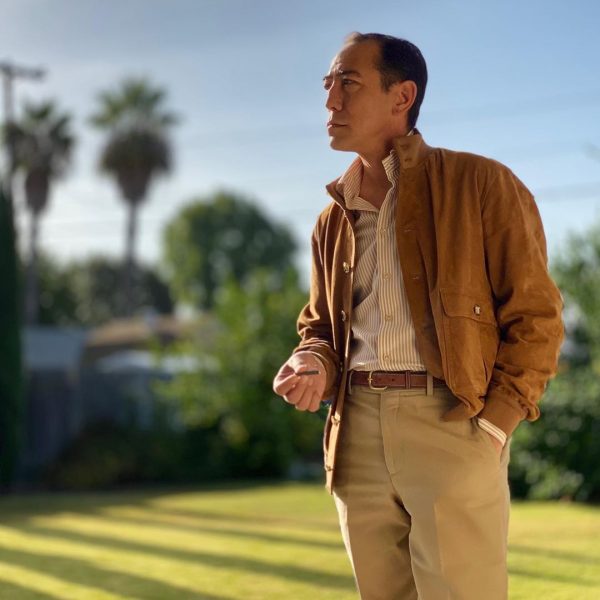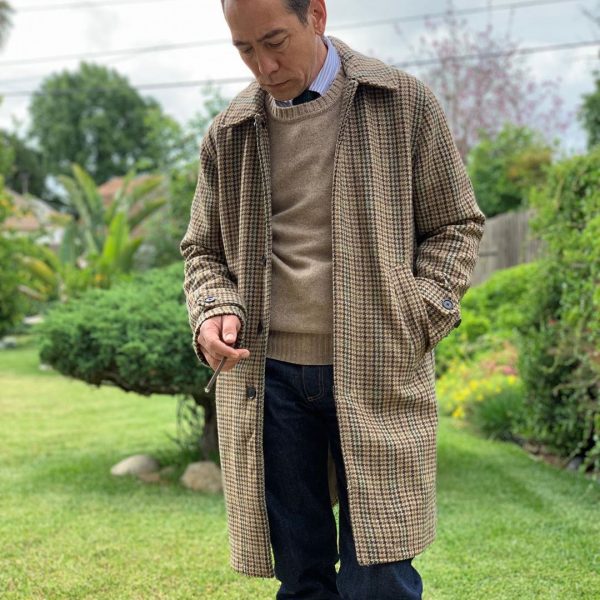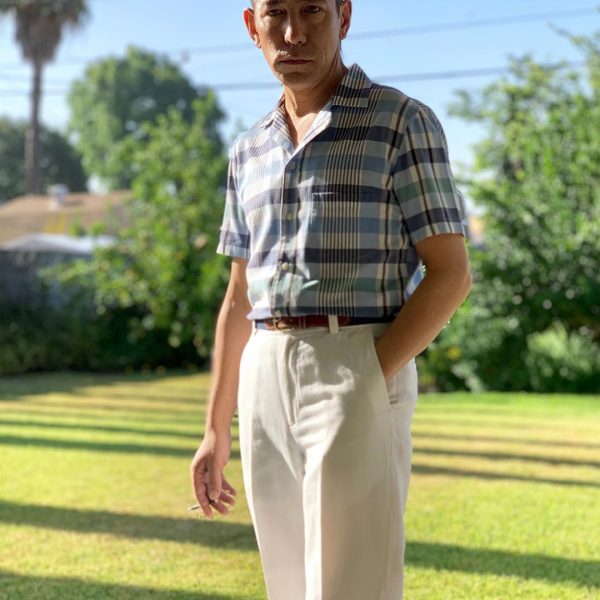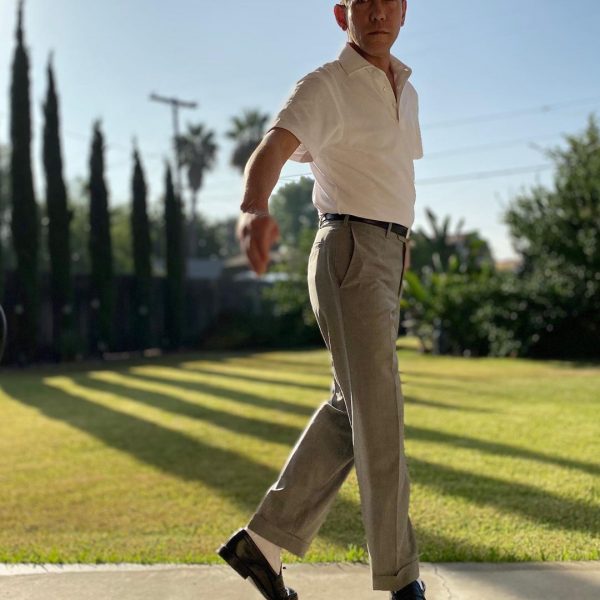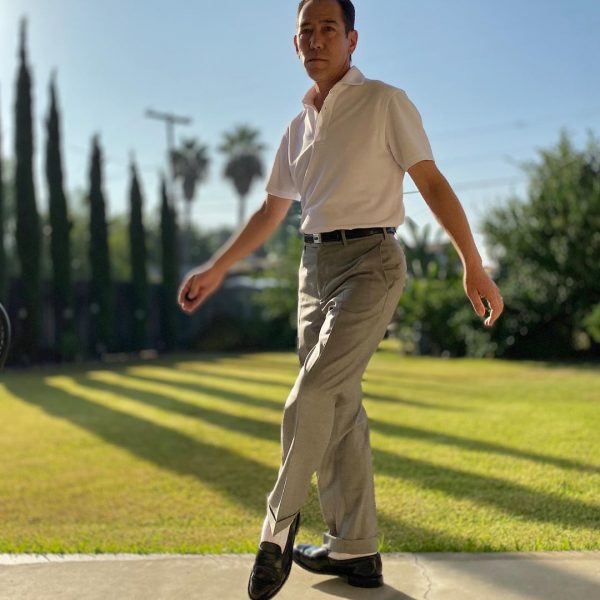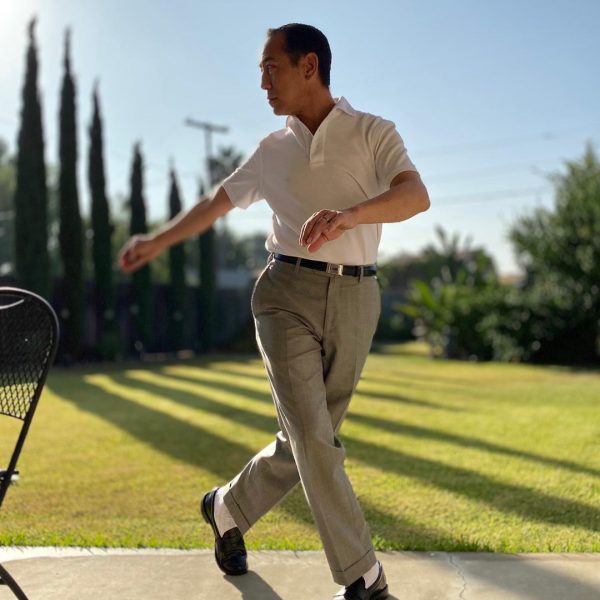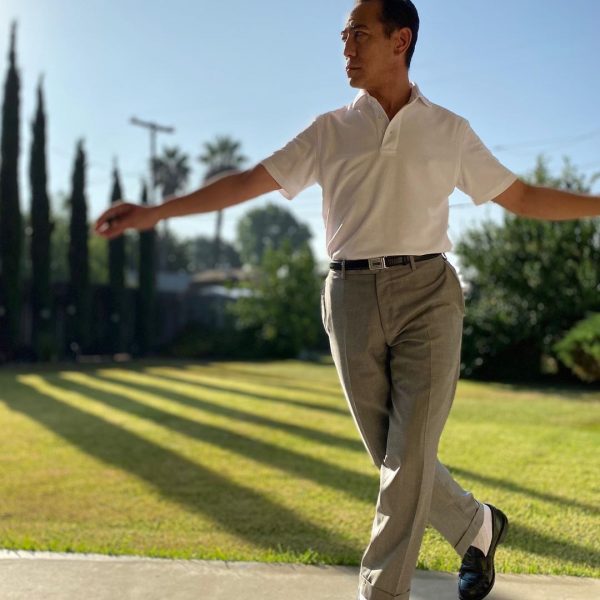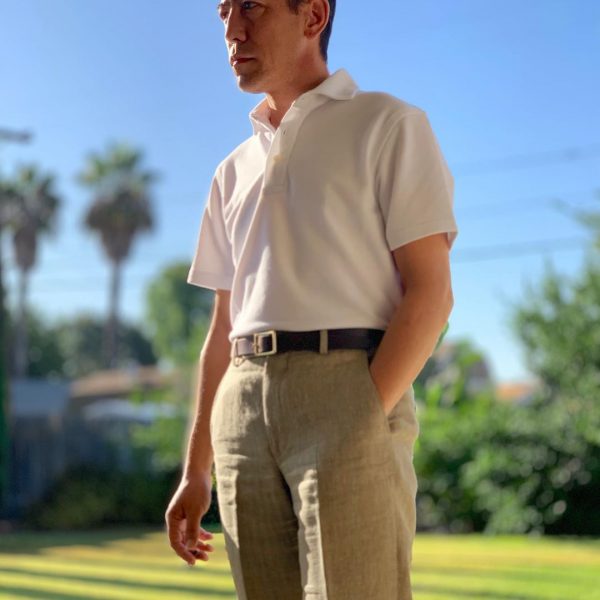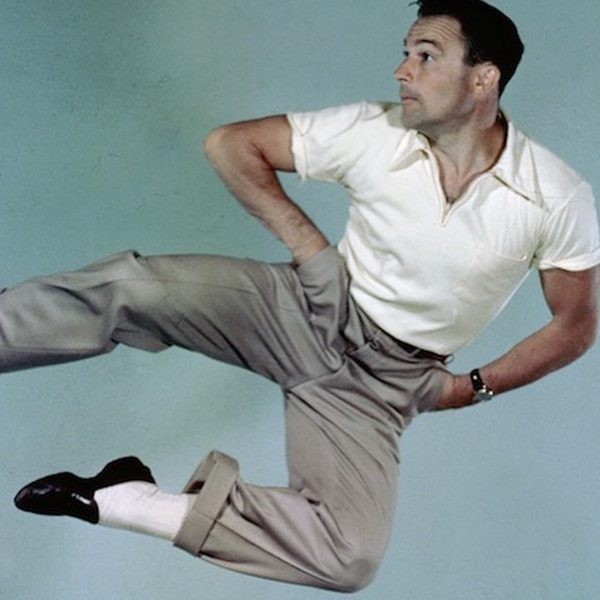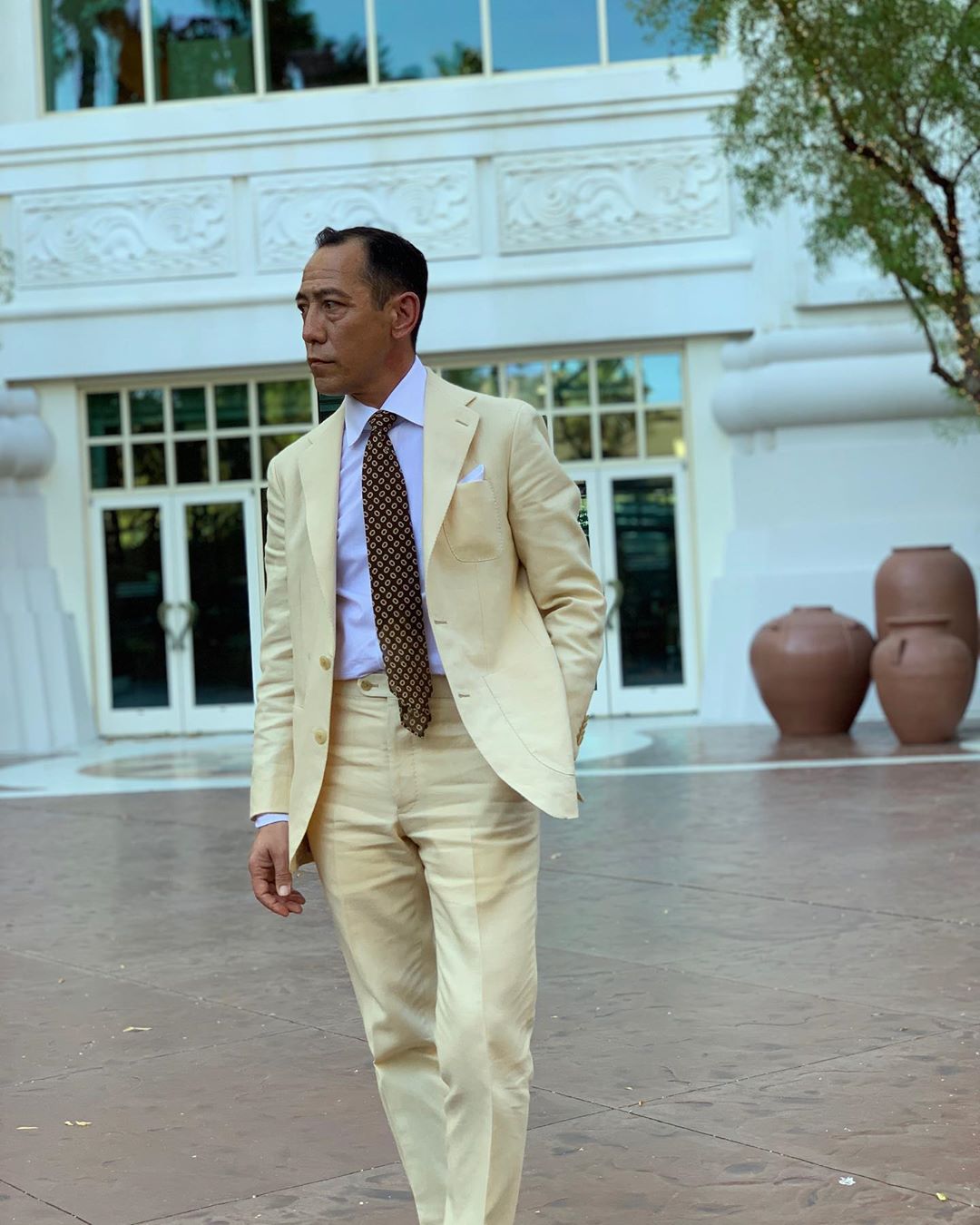
California style is often cast as being apart from the nation. New Englanders are clad in Woolrich flannels and LL Bean boots, just as cool, downtown artist types in New York City seemingly only ever wear black. But in the beach towns radiating up and down California’s coast, we think of a particular kind of sportswear. Tan, athletic people are always laughing and smiling. They wear board shorts, graphic tees, and Rainbow flip-flops, sometimes switching it up to Vans. This is the marketing image of PacSun and Hollister, an exotic fantasy first communicated through surf films such as Gidget (1959), Beach Party (1963), Blue Hawaii (1961), and Ride the Wild Surf (1964). “The clothing is often simple and always secondary to a lifestyle in which everyone is young, beautiful, and surrounded by friends on the beach,” Eliza Brooke once wrote of California style at Racked.
There was a time, however, when California was known for tailoring. The leading men most closely associated with the Golden Age of Hollywood — Cary Grant, Fred Astaire, Clark Gable, Gregory Peck, and Humphrey Bogart among them — spent much of their lives in and around Los Angeles. Their work also helped spread a lot of American taste around the world: the two-piece suit, the lounge suit as business dress, the button-down collar, penny and tassel loafers, and belted trousers. While California didn’t invent these things, it provided the necessary marketing through films and TV shows. American tailoring is most closely associated with the East Coast, where it continues to live today. Still, many of the most iconic images of American men in a coat-and-tie were shot in Southern California.
Some men there still keep the tradition alive. Robert, who lives in Orange County, one of the suburbs just outside of Los Angeles, wears tailored clothing on most days. For the last fifteen years, he’s worked as an Art Director for a large consumer goods firm, spearheading the company’s branding and packaging design. He picked up his love for tailored clothing through old films. “Even as a kid, I wanted to be Gene Kelly, Fred Astaire, Bogart, Sinatra, Cary Grant, and John Wayne,” he says. “I’m inspired by old photographs of Hollywood celebrities of the ’30s through ’60s; and those incredible Apparel Arts/ Esky illustrations. I think there is a lot to glean from those decades, but I also don’t want to look like I just walked out of a time machine. It’s probably obvious, but in recent years, my biggest inspiration has been Mr. Yukio Akamine. Most of my ‘aha’ moments come from something I gleaned from him.”
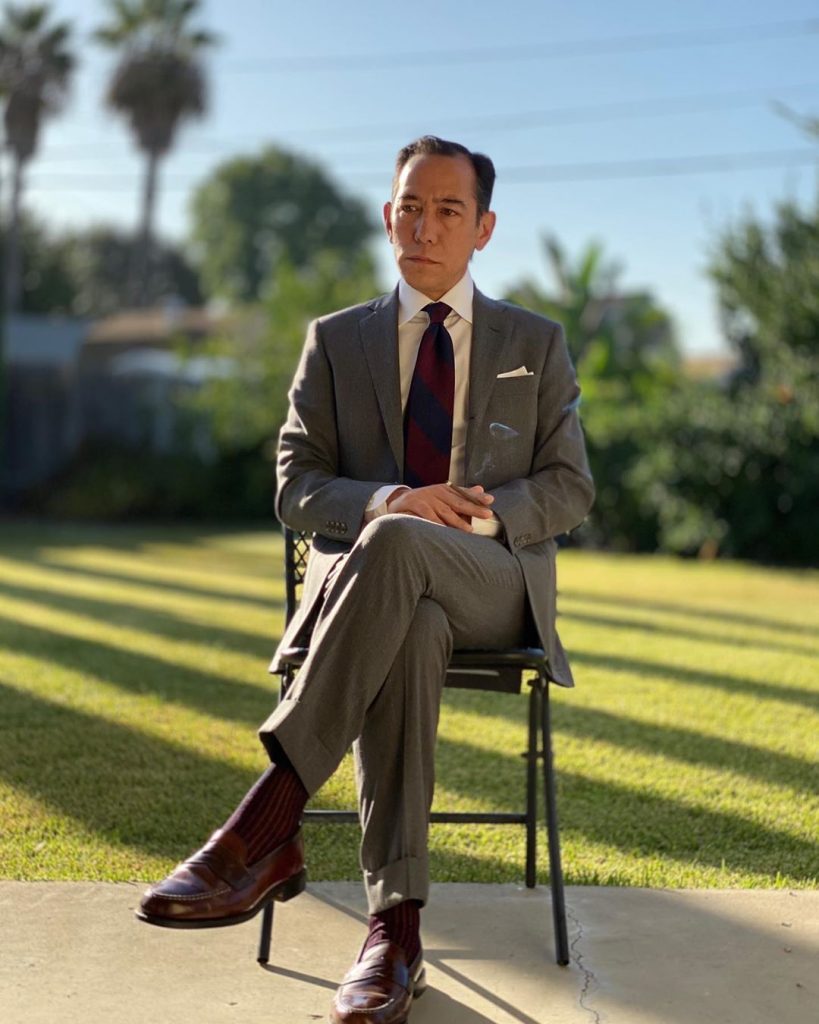
There are all sorts of challenges to wearing tailoring in SoCal, many of which will sound familiar to readers. While the stereotypes here are often overstated, most people here are indeed casually dressed. The weather is also pretty temperate — too warm for the heavy 18oz tweeds and gamekeeper coats that come out of Scotland. Consequently, Robert has had to find ways to keep clothes lightweight and dress things down. In the summer, he often finds himself in Mersolair and Spence Bryson linen suits, which he buys from Kent Wang’s made-to-measure program. The suits are made with a three-roll-two closure, barchetta breast pocket, and patched hip pockets. He also enjoys wearing Castañer’s canvas espadrilles with a rubber outsole, Crockett & Jones’ unlined Harvard loafers, and Kent Wang’s pique cotton polos. In the winter months, he likes tweed jackets and flannel trousers but doesn’t find as many occasions to wear them. So he sports lighter weight Barbour jackets instead with oxford-button downs, wool sweaters, and Alden boots.
“Casual suits look great on men of any age, but especially men who are worried about looking overly dressed up,” he says. “Nearly all my suits have some casual element. Put This On’s articles on suit formality show how you can work with the details — the fabric, color, and construction all play a role in making a garment look less formal. I’ll wear a casual suit almost anywhere. The way I look at it is, if it used to be ‘normal’ for a man to wear a suit in that setting, you still can. For certain environments, however, it helps if you style it more casually. If I were going to a casual lunch with my wife, then for drinks at a pub, I’d probably wear a suit, but ditch the tie, maybe a polo instead of a button-down. I’d do less formal shoes, usually loafers, but occasionally sneakers if I’m feeling rebellious.”
Robert is big into polos, especially those from Kent Wang, G.Inglese, and Lacoste. “I think the fit is most important. Not too bulky in the chest or waist; and a good fit in the shoulder,” he continues. “I think most of the negative stereotypes come from wearing them too casually. There’s a place for that, and sometimes I want to look like an old man on a golf course. But I think that the high-low effect makes all the difference. Trousers in linen, cotton, or wool hopsack; with 2” cuffs, side-adjusters, and extended tab waistbands are details I like in odd trousers in general. But when paired with a polo shirt, I think those details help elevate the formality, making the outfit seem somehow more elegant. I typically wear polos with tailored trousers or casual suits. Kent Wang’s polos have a spread collar that looks great when layered under a jacket or when worn on its own. This past summer, I bought a couple of G.Inglese’s one-piece Miami collar polos from No Man Walks Alone. Those are beautiful, rakish, and make me feel way cooler than I am in real life. Lacoste’s are a classic, and I find their cloth lightweight and comfortable.”
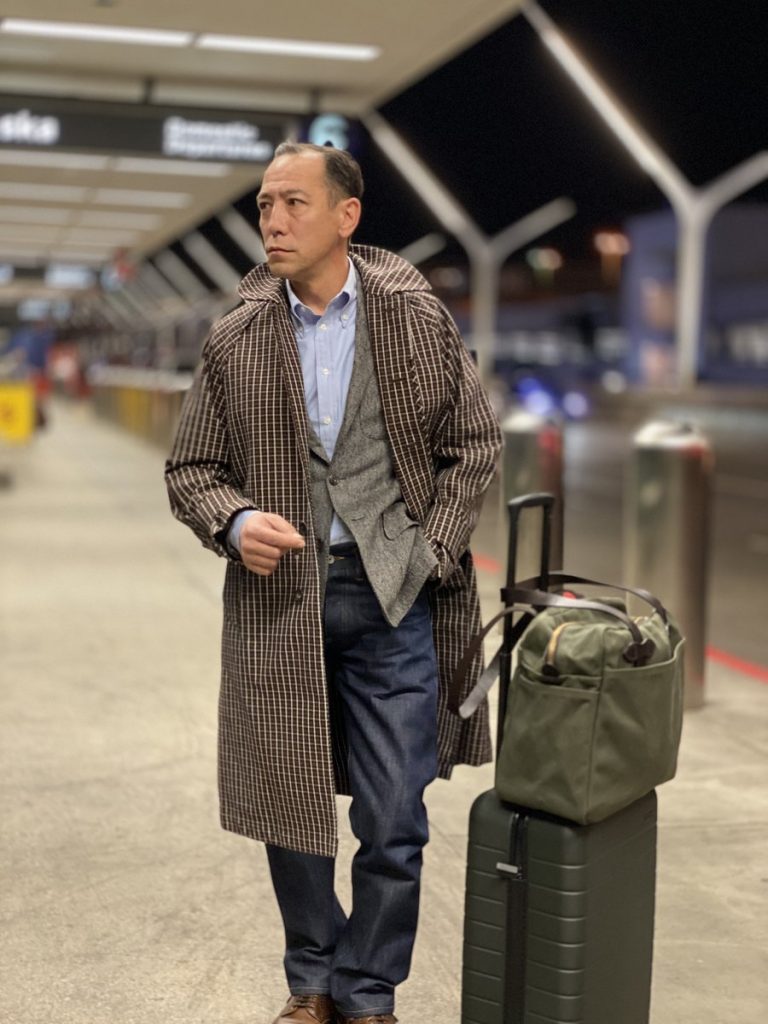
There’s a good smattering of genuine casualwear in his wardrobe, as well. Things that are smart, but not overly dressy, tailored to fit, but not pristine. “I would say, regardless of the season, I often wear Epaulet’s Doyle Jacket,” he says. “The Doyle is their version of a French chore coat. I have one in French blue cotton-linen, one in brown canvas, and one in indigo chambray. I find them very comfortable and versatile. I dress them up a bit with an OCBD and tie. I’ll also wear them with a sweatshirt or sport shirt.”
Some of my favorites from Robert include the three-quarter length topcoats, including this season’s Ikiji in heavyweight cotton twill. Topcoats are a great way to get some of the benefits of tailored clothing without looking like you’re headed into a boardroom. Robert also sports Valstarinos, which is a citified, Italian version of a traditional American A-1 jacket. It’s a style that goes well with slim-straight jeans, flat-front chinos, and even tailored trousers. It’s something you can wear to work and weekends, and it’s light enough for spring and fall.
Then there are the Harringtons and other simple zip-up jackets, which Robert wears exceptionally well. Sometimes these jackets can look a bit too conservative — more retiree than James Dean — but Robert somehow gives them some verve. Even his most pared-down outfits, where he teams a blue madras shirt with a thin belt and white trousers, have something special. “I usually try to match my socks to either my shirt or tie, but if that doesn’t work, I fall back to matching socks with either my shoes or trousers,” he says. “I also try to match my shoes to the tie or jacket when possible. I’ll select a certain shade of brown if I think it will match, say a burgundy color tie or a brown jacket.”
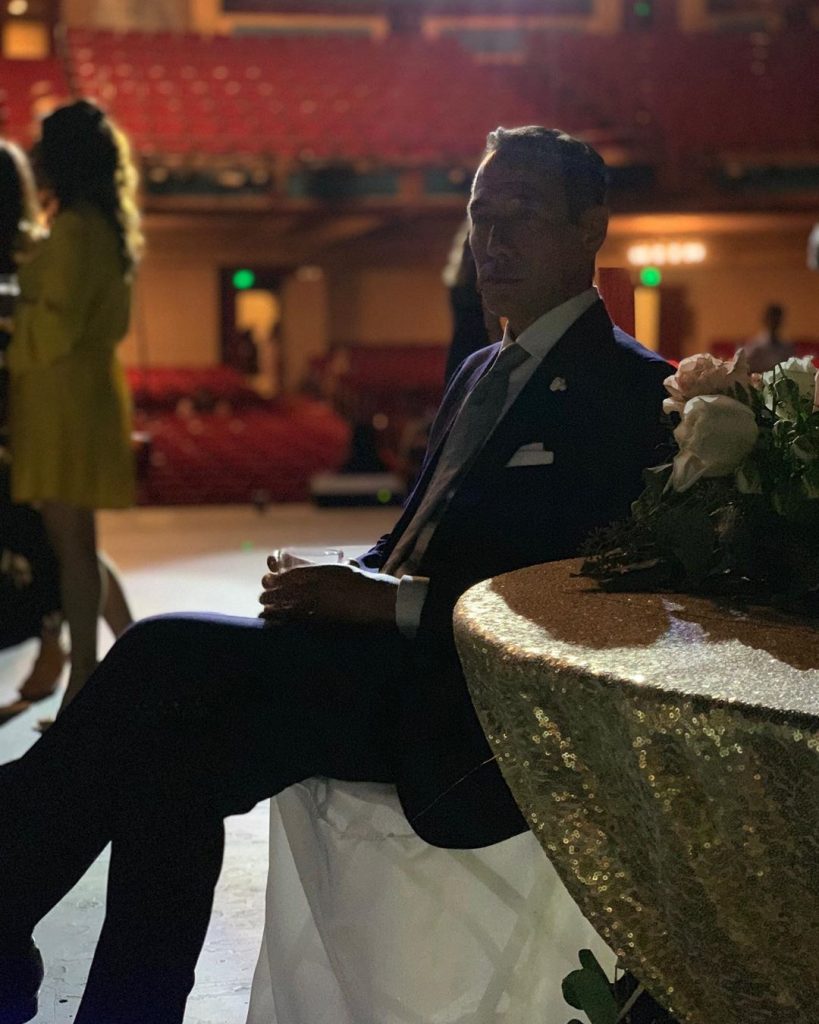
Robert’s Suggestions for Dressing Better
I ask Robert if he has any suggestions for men who are just starting to build a better wardrobe. How does he feel you can dress up in more casual towns? Does he have any personal rules or guidelines for how he puts together an outfit? He shared some tips with us.
Dress Accordingly: “I always start with the weather. Not just in terms of comfort, but also how I feel an outfit may look in my surroundings. If the sky’s blue, I might try to wear blue. If the clouds are gray, I might play off the gray. Next, I think about what I’m doing that day. I try to be very conscious of the level of formality as I put things together. Tie or no tie? How formal of a tie? Should I wear loafers or oxfords? My goal is to feel comfortable, prepared, and also look the part for the day’s activities. If I’m planning on eating a pizza with summer truffles, I might try to match the truffles — seriously. I always start by selecting one piece of clothing that fits within the context. I then try to reinforce the story with the rest of the outfit.”
Take Your Time and Experiment: “I think everyone develops their tastes over time, which in turn informs their style. You have to be introspective. Fundamentally, I feel the key to wearing anything well is being comfortable in your clothes. Fit, I think, is the utmost consideration for being comfortable. You have to feel good about the way things fit you. It’s more than just the length, width, and volume. It’s also about balance, symmetry, and details. Learning how things fit you best takes time, experimentation, and a certain level of risk. You need to be critical of yourself, and at times be open to criticism from others. This isn’t always easy. It can be disheartening, but given time can be immensely rewarding.
I think once you are confident in what looks good on you, it frees you up for more experimentation with styling. The way you put things together is a reflection of your creativity and style. Pay attention to what you see in the world. During my time in the beauty industry, I’ll never forget an interview I saw with Vidal Sassoon, where he said something like, ‘Creativity is like having an antenna. Use it to pick up everything you see. Sometimes you’ll be working on an idea, and it comes to you — wait, I saw that, and if I put that with that.’ Being creative is allowing the things that strike you to manifest in unpredictable ways … creating a mashup, and in essence, bringing about something new.”
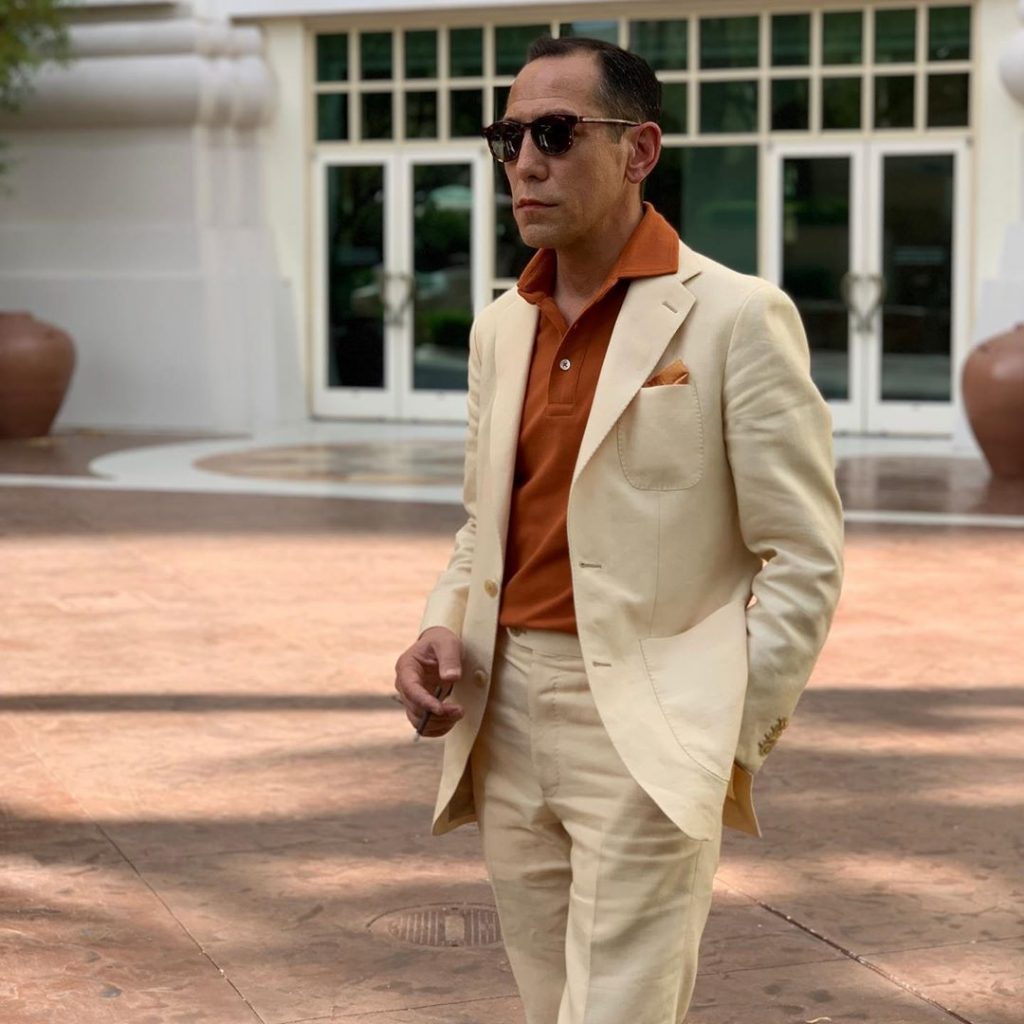
Grow A Wardrobe Organically: “Start with what you already own. Picture how each item fits into your wardrobe. Think about how you can make those items more useful by considering or testing out potential fits. Take note of what doesn’t work and what could make it better. Start acquiring the pieces that will make it work to fit the ideal vision you have in your mind.
If I had to start all over again, I’d focus more on suits than sport coats. Especially more 3-4 season suits. I also have a lot of winter clothing, but I live in a place that doesn’t get very cold. I continue to be in love with the fantasy of fall/ winter wardrobes, but I should have spent my money on other things. That said, I want to invest in a couple of overcoats and some of O’Connell’s Shetland sweaters. I think they would allow me to wear lighter weight suiting when it does get cold or rainy.
I also wish bought made-to-measure shirts from the start. And not invest so much in shoes or boots, especially #8 shell cordovan. I probably also shouldn’t have bought so many go-to-hell pants. All things considered, however, I’m not sure I would change many things. We all need to experiment and make mistakes to learn.”
Put Yourself Out There: “If you’re thinking about wearing tailoring more often, my advice is to have the courage and take the leap. We grow by taking risks. Feeling nervous is a sign that we’re exploring new territory, trying something outside of our comfort zone. Again, it comes down to developing confidence.
Several years ago, I started making a conscious effort to wear tailored clothing more frequently. It was a gradual process, starting with dressing to go out more. I’d be better dressed at dinner, better dressed for drinks, better dressed on vacation, and eventually better dressed at work. It was practice. I was practicing to be myself in the world, and learning to feel confident as myself in the world. It takes time to build confidence in yourself. Be patient; it doesn’t just happen. You have to start putting yourself out there. The sooner you do, the sooner you’ll gain confidence.”
Thanks to Robert for taking the time to talk with us! Readers who want to see more of Robert can follow him on Instagram.
